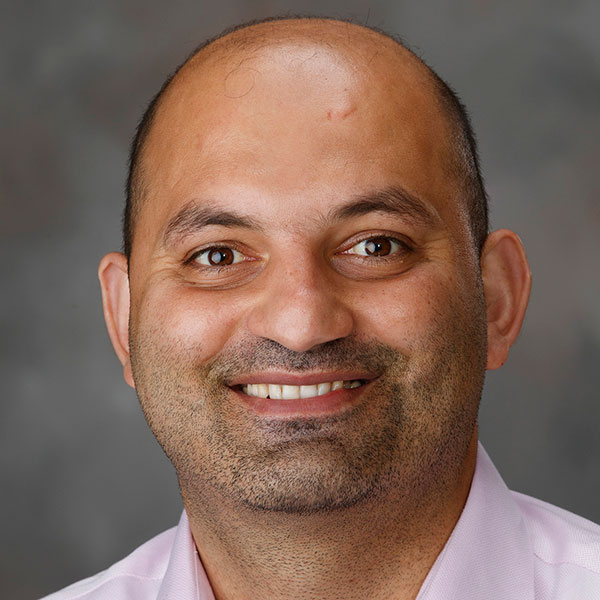Calendar Icon
Jan 25, 2019
Person Bust Icon
By Karl Vogel
![]() RSS
Submit a Story
RSS
Submit a Story
Inspired by biological systems such as human skin, eagle wings, octopus tentacles and elephant trunks, Nebraska engineer Fadi Alsaleem has a patent pending for a micro-electromechanical systems (MEMS) technology capable of integrating sensing, actuation and computation internally within a soft material.
The development and advancement of these smart materials will allow the materials to perform complex computing and respond without the need of a conventional computer system.
That will have an impact on a large variety of applications, said Alsaleem, assistant professor of architectural engineering. Those could include airfoils that change their aerodynamic profile to skins with a realistic sense of touch that will allow for robots to do work that has typically been hazardous.
Traditionally MEMS has enabled low cost, low power, and very small sensors. Thanks to MEMS, almost a dozen sensors can now fit in a smartphone with power consumption in the microwatt. However most these MEMS sensors are limited to acquiring signals and sending them to computing units that can perform complex tasks.
Alsaleem, assistant professor of architectural engineering with a courtesy appointment with the Mechanical & Materials Engineering department, has been working for years on a novel MEMS integrated solution, and said this technology is a huge step forward in the typical sensing-and-computing process.
“This is taking the MEMS sensor to the next level,” Alsaleem said. “This new invention is moving the intelligence and letting the sensor also do some intelligent computing.”
“It’s making MEMS sensors work like they do in an octopus arm. The big advantage octopus arm has is it has a skin sensors with some modical, localized computing capabilities that can respond and perform basic motions without having to send a signal to the central brain”
“Artificial intelligence is all the buzz right now, and there’s a push to see how small you can shrink processors or the amount of power they will consume,” Alsaleem said.
“With this MEMS-enabled material, we can eliminate the need for the typical computer system. Anything you think about where you need a processor to process the data, this is a solution. You don’t need a processing unit, you don’t need a computer and microprocessors. We engineer the sensor to do the processing, and the sensors are imbedded in soft material that will allow us to do more complex work in environments that have typically been difficult.”
The new MEMS technology, Alsaleem said, could spur advances in a burgeoning smart building industry – for which Alsaleem and The Durham School of Architectural Engineering and Construction have been on the leading edge, having held the first Smart Building and Internet of Things (SBIoT) workshop in November 2018.
Alsaleem also said creating a smart material that uses a the new MEMS technology would save lives and cut costs in medical fields by making robotic surgeries minimally invasive.
“The doctors we’ve talked to say the main issue is the current robots have rigid bodies that can cause additional problems that have to be fixed during the surgery,” Alsaleem said.
“We’re changing is robot itself, making it soft and controllable. It has our sensor and has computing ability and the intelligence to navigate inside the body without touching the important tissues. This can lessen the time needed in the operating room and can decrease the recovery time for patients.”
In addition to working with NUtech Ventures on a patent, Alsaleem is also seeking federal funding for the project and is spreading the gospel of MEMS and the soft materials he’s developing.
In the past few months, Alsaleem has had articles about MEMS published in four prestigious journals – IEE Explore, Advanced Electronic Materials, Nature Scientific Reports, and Applied Physics Letters – and is organizing a seminar to be held at the American Society of Mechanical Engineers (ASME) International Design Engineering Technical Conferences & Computers and Information in Engineering (IDETC-CIE) Conference this August in Anaheim, California.
“This is a new way of doing things, new work we’re doing here,” Alsaleem said. “This can change the fundamental ways we do so many things, and it’s exciting to be developing this technology.”
Submit a Story

